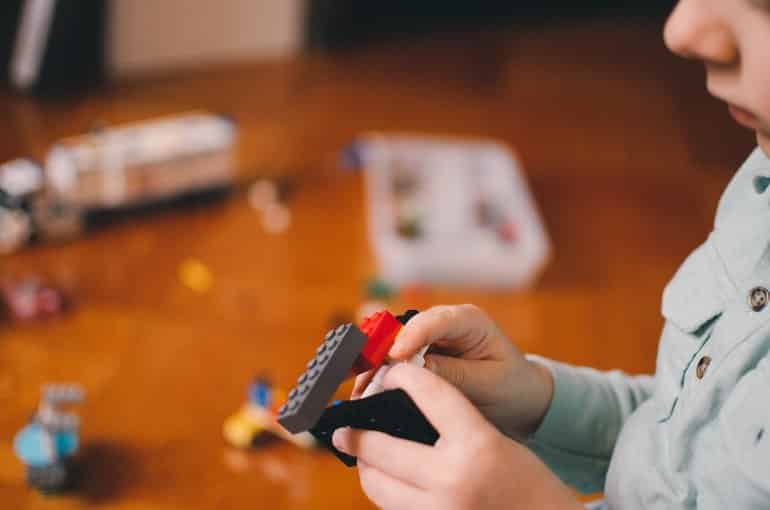Summary: CLOCK gene disruptions may be a mechanism that underlies several forms of autism and other neurodevelopmental conditions.
Source: University of Minnesota
In Molecular Psychiatry, a team of scientists from the University of Minnesota Medical School, University of Texas Health San Antonio, and the Biomedical Research Institute (BRI) of the Foundation for Research and Technology Hellas (FORTH) in Greece found that the disruption of a circadian clock gene may be involved in the development of autism spectrum disorder.
Autism spectrum disorder, or ASD, refers to a neurodevelopmental disorder characterized by a wide range of behavioral conditions including challenges with social skills, repetitive behaviors, speech and nonverbal communication. According to the Centers for Disease Control and Prevention, ASD affects one in 44 children in the U.S.
About 50-80% of children with ASD have sleep problems, compared to less than 30% in the general population. The causes of sleep problems in ASD are not entirely clear, but a malfunctioning body clock could be the culprit.
“It has long been recognized that the function of the body clock is frequently disrupted in autism patients and these patients often exhibit various sleep problems,” said Ruifeng Cao, MD, Ph.D., an assistant professor of neuroscience at the U of M Medical School, Duluth Campus and co-author of the study. “But, it is not known whether clock gene disruption can directly cause autism.”
The study found that the disruption of an essential clock gene in preclinical models can lead to autistic-like phenotypes. Specifically, the global or cerebellar deletion of the Bmal1 gene can cause severe impairments in sociability, social communication and excessive repetitive behaviors.

The models also illustrated damages to their cerebellum—or cerebellar ataxia. The research team further studied the pathological changes in the cerebellum and found a number of cellular and molecular changes that indicate neurodevelopmental deficits.
“Clock gene disruption could be a mechanism underlying several forms of autism and potentially other neurodevelopmental conditions, and this finding paves the way for further exciting research,” said Christos Gkogkas, Ph.D., a lab principal investigator in neurobiology at BRI of FORTH.
The research team plans to continue to study other clock genes that are found mutated in ASD. More importantly, they recommend development of novel therapeutic strategies based on their findings.
About this autism and genetics research news
Author: Press Office
Source: University of Minnesota
Contact: Press Office – University of Minnesota
Image: The image is in the public domain
Original Research: Open access.
“Autistic-like behavior and cerebellar dysfunction in Bmal1 mutant mice ameliorated by mTORC1 inhibition” by Dong Liu et al. Molecular Psychiatry
Abstract
Autistic-like behavior and cerebellar dysfunction in Bmal1 mutant mice ameliorated by mTORC1 inhibition
Although circadian and sleep disorders are frequently associated with autism spectrum disorders (ASD), it remains elusive whether clock gene disruption can lead to autistic-like phenotypes in animals. The essential clock gene Bmal1 has been associated with human sociability and its missense mutations are identified in ASD.
Here we report that global Bmal1 deletion led to significant social impairments, excessive stereotyped and repetitive behaviors, as well as motor learning disabilities in mice, all of which resemble core behavioral deficits in ASD. Furthermore, aberrant cell density and immature morphology of dendritic spines were identified in the cerebellar Purkinje cells (PCs) of Bmal1 knockout (KO) mice.
Electrophysiological recordings uncovered enhanced excitatory and inhibitory synaptic transmission and reduced firing rates in the PCs of Bmal1 KO mice. Differential expression of ASD- and ataxia-associated genes (Ntng2, Mfrp, Nr4a2, Thbs1, Atxn1, and Atxn3) and dysregulated pathways of translational control, including hyperactivated mammalian target of rapamycin complex 1 (mTORC1) signaling, were identified in the cerebellum of Bmal1 KO mice.
Interestingly, the antidiabetic drug metformin reversed mTORC1 hyperactivation and alleviated major behavioral and PC deficits in Bmal1 KO mice. Importantly, conditional Bmal1 deletion only in cerebellar PCs was sufficient to recapitulate autistic-like behavioral and cellular changes akin to those identified in Bmal1 KO mice. Together, these results unveil a previously unidentified role for Bmal1 disruption in cerebellar dysfunction and autistic-like behaviors.
Our findings provide experimental evidence supporting a putative role for dysregulation of circadian clock gene expression in the pathogenesis of ASD.







